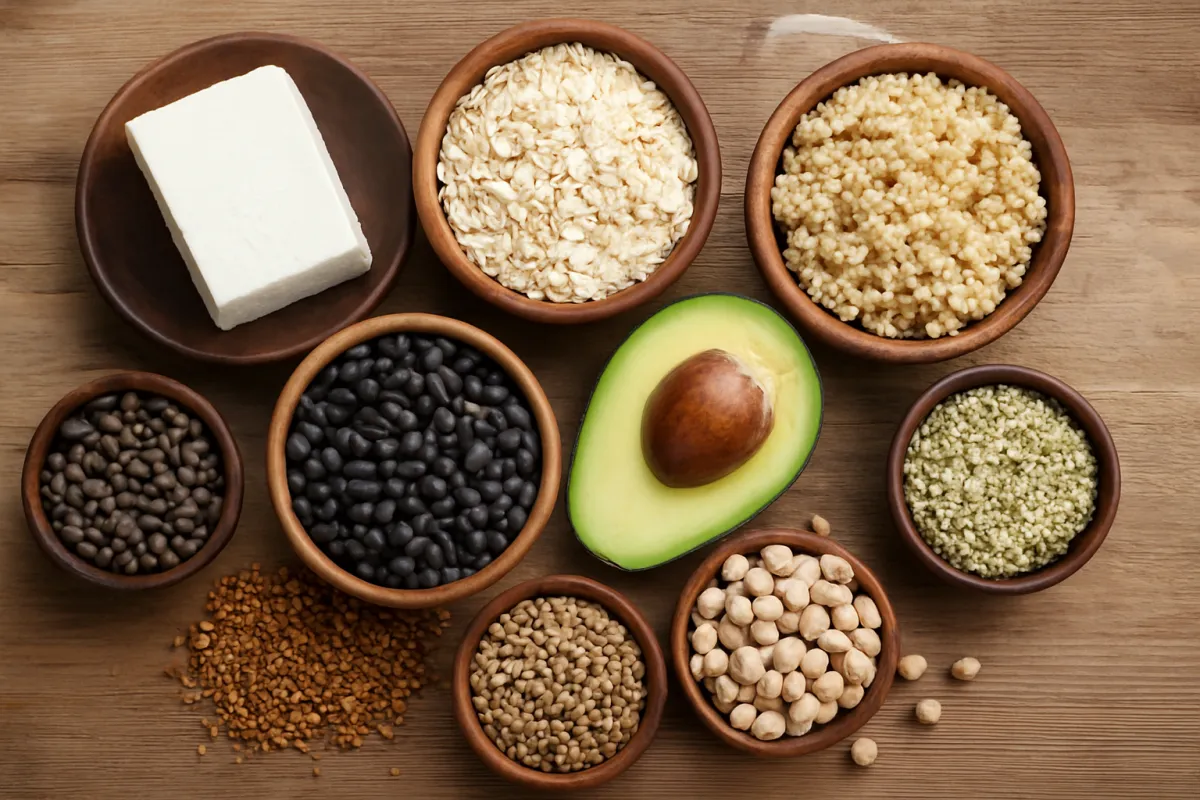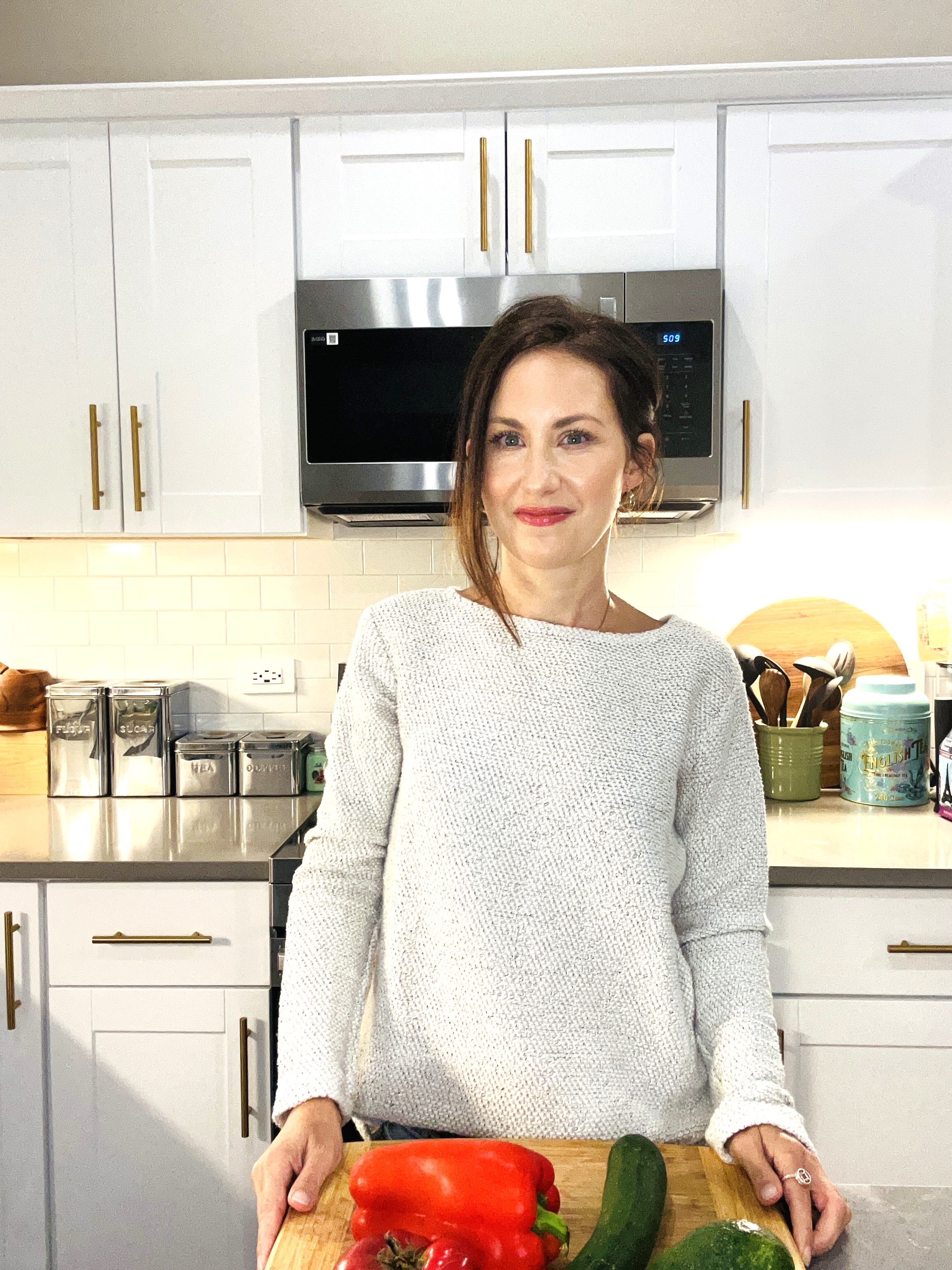
The Truth About Plant Proteins: Complete vs Incomplete (And How to Get Enough)
If you’ve ever wondered whether you’re really getting enough protein from plants — especially in midlife — you’re not alone.
Terms like “complete protein,” “amino acid profile,” and “protein combining” often show up in wellness circles, but they’re rarely explained clearly. And when you’re already juggling work, family, and hormonal shifts, the last thing you want is more food confusion.
So let’s simplify this.
You can get all the protein you need from plants. You just need to understand how they work — and how to pair them to support your body, mind, and energy.
🌱 What Is a Complete Protein?
A complete protein contains all nine essential amino acids that your body can’t produce on its own. These amino acids are critical for:
Repairing tissue and muscle
Balancing hormones
Supporting immune health
Creating enzymes and neurotransmitters
Animal proteins (like chicken, eggs, fish, and dairy) naturally contain all nine — which is why they’re called complete.
But many plant proteins fall into the “incomplete” category. This simply means they’re missing, or low in, one or more essential amino acids.
That doesn’t mean plant proteins are “worse” — it just means you need to be mindful about variety and combination.
🥣 Understanding Incomplete Plant Proteins (And How to Balance Them)
Different plant-based foods tend to have different amino acid strengths and gaps:
Grains (e.g. rice, wheat, oats) → high in methionine, low in lysine
Legumes (e.g. lentils, beans, chickpeas) → high in lysine, low in methionine
Nuts & seeds → great for healthy fats, but usually lower in lysine
Vegetables → contain small amounts of protein that can contribute, especially when paired
This is where complementary pairing comes in.
Pairing foods with opposite strengths (e.g. grains with legumes) gives you the full amino acid profile your body needs.
Examples:
Lentils + rice
Hummus + whole grain pita
Oats + chia seeds
Black bean + corn tacos
Peanut butter on whole grain toast
💡 Myth-buster: You don’t need to eat these foods in the same meal. Getting a good variety over the day is more than enough.
✅ The Complete Plant Protein List (No Pairing Needed)
Some plant-based foods are complete proteins on their own. These are brilliant additions to your meals because they simplify things:
Quinoa – cooks like a grain, but it’s actually a seed
Soy (tofu, tempeh, edamame) – fantastic for hormone and bone support
Buckwheat – great in porridge or pancakes, naturally gluten-free
Hemp seeds – rich in omega-3s, protein, and fibre
Chia seeds – good for digestion, hydration, and protein
Amaranth – ancient grain that’s full of iron, magnesium, and protein
Spirulina – technically an algae, but packed with protein
For the full list of complete plant proteins and how to use them, check out the Complete Plant Proteins Guide inside this month’s Mind Body Wellness Membership.
Bonus tip: If you're looking for an effortless boost of nutrients and protein, I love these quick, on-the-go spirulina tablets — packed with plant-based protein, minerals, and antioxidants. Use code ELIZABETH at checkout to save.
🥗 High Protein Vegetarian Meals That Actually Work
Getting enough protein is less about perfection and more about planning.
Busy day ahead? If you're juggling work, workouts, and family, and just need a quick way to fuel up — a nourishing plant-based protein shake can be a simple solution. I recommend this one for a complete meal that covers your bases in minutes.
Here’s a balanced vegetarian meal plan that hits the mark:
Breakfast:
Tofu scramble + whole grain toast + avocado slices
OR
Overnight oats with chia seeds + almond butter + berries
Lunch:
Quinoa salad with chickpeas, olive oil, herbs and chopped vegetables
Snack:
Coconut yogurt + hemp seeds + cacao nibs + walnuts
Dinner:
Lentil curry with brown rice + roasted vegetables
That’s a wide variety of complete and complementary proteins — without needing meat, fish, or dairy.
🔑 Want help putting this into action? The High Protein Whole Foods Vegetarian Meal Plan inside the membership gives you ready-made options to follow (and mix and match).
💪 How Much Protein Do Women Over 40 Really Need?
This is the part most women are under-informed about.
As oestrogen declines, your muscle mass decreases, your metabolism shifts, and your ability to recover slows down. Which means you actually need more protein — not less.
Aim for:
20–30g per meal
Protein at breakfast to support blood sugar and mood
1g of protein per 1lb of lean body mass (a solid general guideline)
Most women under-eat protein — especially at breakfast — which can leave you feeling foggy, snacky, and fatigued later in the day.
🧠 Protein and Your Brain (Yes, Really)
Protein doesn’t just support your muscles — it also fuels your brain chemistry.
Essential amino acids are precursors to neurotransmitters like:
Serotonin → mood stabiliser
Dopamine → motivation and pleasure
GABA → calm and relaxation
That’s why including protein in every meal helps reduce mood swings, brain fog, and irritability — especially in perimenopause.
👎 Common Mistakes to Avoid
Let’s quickly bust a few more myths:
❌ “You can’t get enough protein from plants.”
→ You can — with a bit of planning and variety.
❌ “You have to track every gram.”
→ Nope. Focus on consistent, balanced meals.
❌ “Soy is bad for your hormones.”
→ Whole soy foods (not ultra-processed soy) are actually beneficial for hormone support and bone health.
🔁 Recap: Your Plant Protein Checklist
✔ Eat a mix of grains, legumes, seeds, and soy
✔ Use complete plant proteins like quinoa, hemp, soy, and chia
✔ Combine foods across the day — not just in one meal
✔ Prioritise protein at breakfast
✔ Use the meal plan in the membership for support
✔ Don’t stress about numbers — focus on nourishment
🌿 Final Thought
You don’t need to be perfect to fuel your body well.
By simply including a wider variety of plant proteins, and being intentional about your meals, you can support:
→ Energy
→ Hormone balance
→ Muscle tone
→ Mood stability
It’s about building meals that love you back — and if you want support with that, I’ve created all the tools for you inside the Mind Body Wellness Membership.
From the Complete Plant Proteins Guide to ready-made vegetarian recipes, everything is designed to make this simple and enjoyable.
🔗 Explore the Membership or Book a Free Consultation here.
